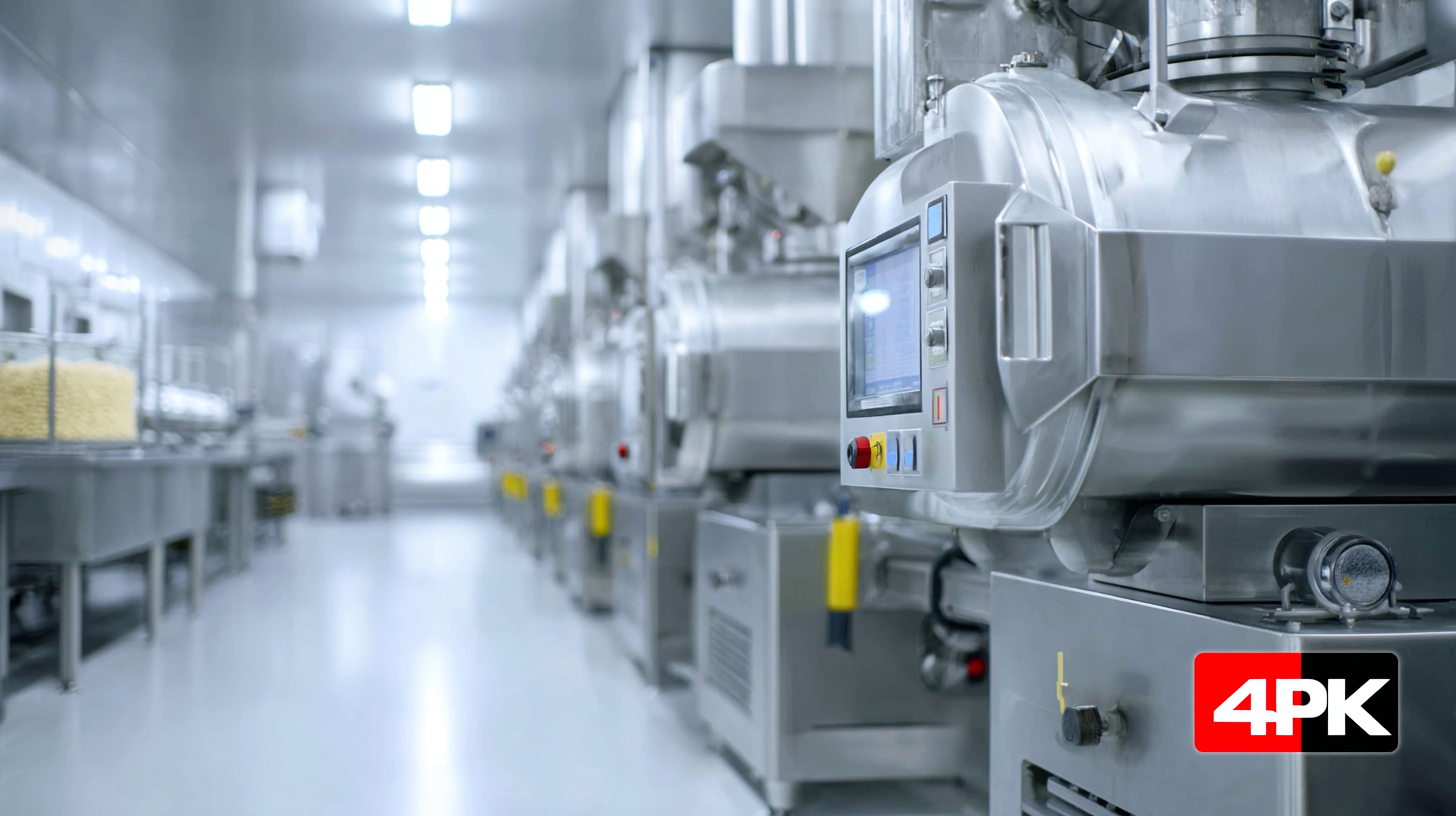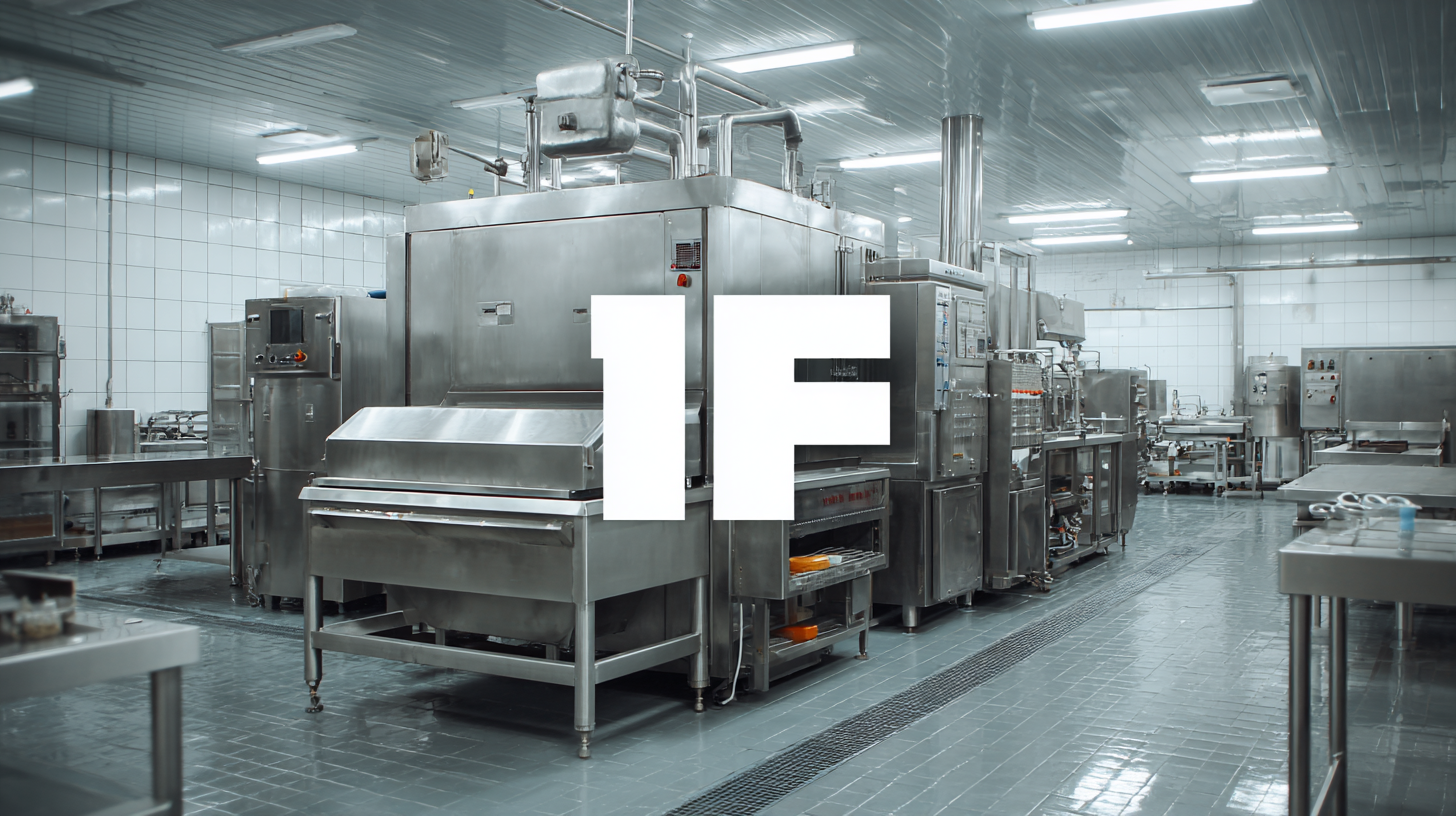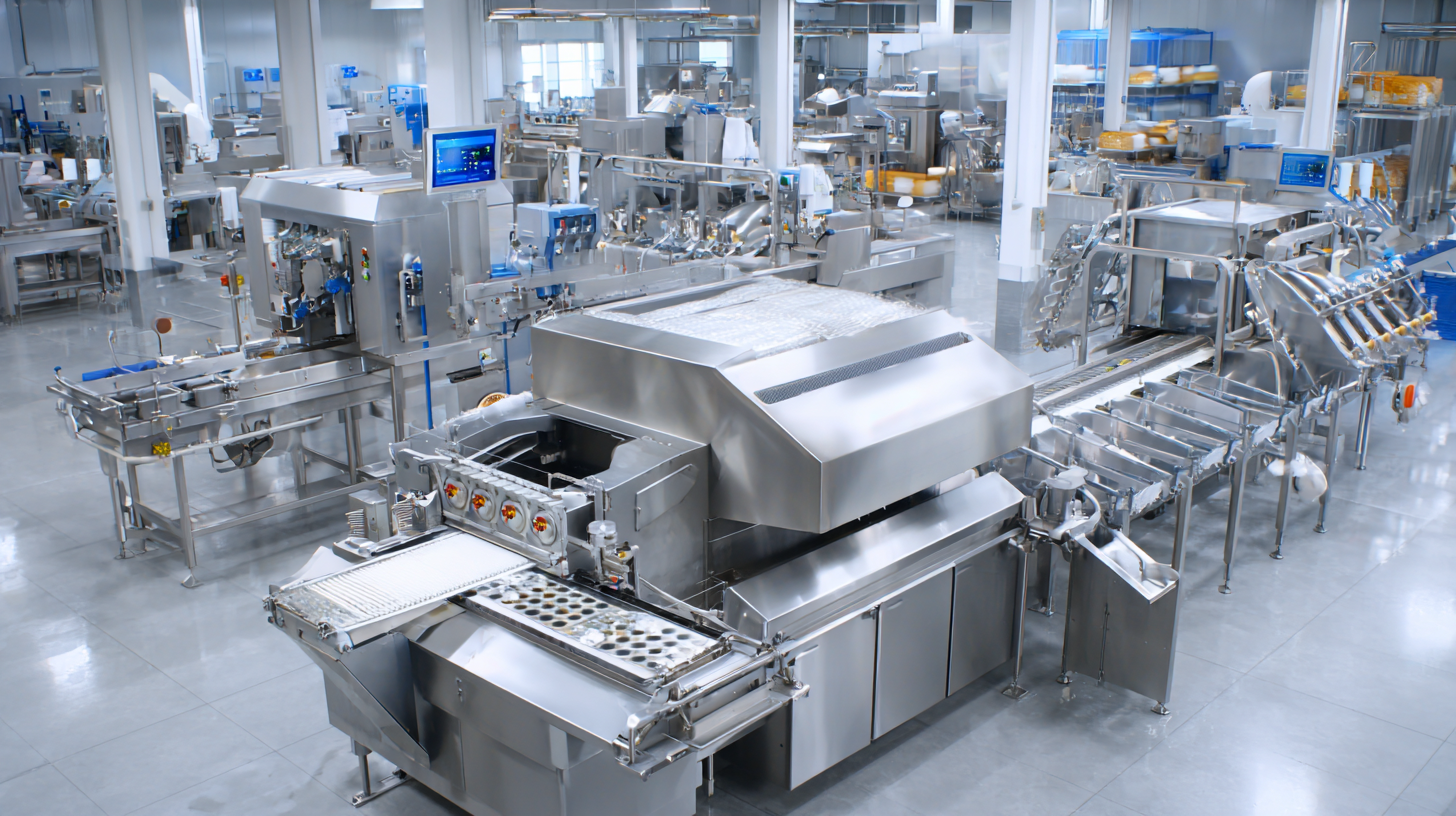5 Tips for Choosing the Best Food Processing Industry Equipment to Boost Your Efficiency
 In the rapidly evolving landscape of the food processing industry, the selection of the right equipment plays a critical role in enhancing operational efficiency and productivity. According to a report by Research and Markets, the global food processing equipment market is projected to reach $100 billion by 2025, underscoring the increasing demand for innovative solutions that streamline production processes. As businesses strive to meet consumer expectations for quality and safety, the right Food Processing Industry Equipment becomes essential. From cutting-edge automation technologies to state-of-the-art preservation methods, choosing the optimal machinery can significantly impact productivity and reduce operational costs. By following a structured checklist approach, industry professionals can ensure they consider all critical aspects when investing in equipment that not only meets current needs but also adapts to future challenges.
In the rapidly evolving landscape of the food processing industry, the selection of the right equipment plays a critical role in enhancing operational efficiency and productivity. According to a report by Research and Markets, the global food processing equipment market is projected to reach $100 billion by 2025, underscoring the increasing demand for innovative solutions that streamline production processes. As businesses strive to meet consumer expectations for quality and safety, the right Food Processing Industry Equipment becomes essential. From cutting-edge automation technologies to state-of-the-art preservation methods, choosing the optimal machinery can significantly impact productivity and reduce operational costs. By following a structured checklist approach, industry professionals can ensure they consider all critical aspects when investing in equipment that not only meets current needs but also adapts to future challenges.
Key Considerations for Selecting Food Processing Equipment to Enhance Productivity
When selecting food processing equipment, key considerations can significantly enhance productivity and efficiency in your operations. One critical factor is the integration of advanced technologies, such as generative AI, which has shown potential in transforming food systems. By employing predictive analytics, food design innovations, and enhanced supply chain management, businesses can optimize their processes and boost output quality.
Another essential tip is to assess the adaptability of the equipment. As climate change and population growth continue to challenge agricultural practices, selecting machinery that can accommodate diverse and fluctuating needs ensures sustained productivity. Choose equipment that supports sustainable practices, such as precision fermentation and the use of genetically engineered microorganisms, to improve efficiency while adhering to environmental goals.
Finally, ensure that the equipment selected can facilitate seamless integration into existing workflows. Prioritize machinery that enhances collaboration in the supply chain, leveraging deep learning and machine learning techniques for smarter inventory control and supplier selection. By focusing on these considerations, food processing companies can navigate the complexities of modern agriculture while significantly boosting their operational efficiency.
Understanding the Impact of Automation on Food Processing Efficiency
 Automation is revolutionizing the food processing industry, significantly enhancing operational efficiency. According to a report by the Food Automation & Manufacturing Conference, companies that integrate advanced automation solutions have seen productivity improvements ranging from 20% to 30%. By utilizing automated systems, businesses can streamline their production processes, reduce waste, and improve overall output quality. Automated equipment, such as packaging machines and sorting systems, minimizes human error and accelerates production timelines, thereby meeting increasing consumer demands efficiently.
Automation is revolutionizing the food processing industry, significantly enhancing operational efficiency. According to a report by the Food Automation & Manufacturing Conference, companies that integrate advanced automation solutions have seen productivity improvements ranging from 20% to 30%. By utilizing automated systems, businesses can streamline their production processes, reduce waste, and improve overall output quality. Automated equipment, such as packaging machines and sorting systems, minimizes human error and accelerates production timelines, thereby meeting increasing consumer demands efficiently.
When selecting food processing equipment, consider investing in automation technology that aligns with your needs. Firstly, conduct a thorough analysis of your current production workflow to identify bottlenecks. Implementing automated solutions at critical points in the production line can lead to significant time savings. Secondly, review equipment that offers flexibility, allowing you to adapt to changing regulations or product lines without massive investments. Remember, choosing modular automation systems can ease the integration process while accommodating future growth.
Lastly, ensure your equipment includes predictive maintenance features. Implementing such technology can reduce downtime by as much as 50%, according to the International Society of Automation. By choosing the right equipment and embracing automation, you'll not only boost efficiency but also position your business for long-term success in the competitive food processing sector.
Assessing Equipment Versatility: Why Adaptability Matters in Food Processing
When selecting equipment for the food processing industry, versatility should be a pivotal consideration. The ability of machinery to adapt to various tasks not only enhances operational efficiency but also reduces the need for multiple, specialized devices. In an ever-evolving food market, where consumer preferences shift rapidly, adaptable equipment allows producers to pivot their processes quickly to meet new demands without incurring significant costs.
Moreover, versatility in food processing equipment can lead to increased innovation. Equipment that easily accommodates different types of food products or processing methods enables businesses to experiment with new offerings, tapping into emerging food trends. This agility not only differentiates brands in a competitive marketplace but also boosts productivity, as workers can operate fewer machines while achieving a wider range of outputs. Therefore, when evaluating potential investments, manufacturers should prioritize machinery that offers adaptability to ensure long-term success in the dynamic food industry landscape.
Evaluating Energy Efficiency: Reducing Costs While Boosting Output in Food Manufacturing
In the food manufacturing industry, energy efficiency is a crucial factor that can significantly impact operational costs and overall productivity. When selecting equipment, it's essential to evaluate its energy consumption and operational efficiency. Investing in machinery that utilizes advanced technologies not only reduces electricity costs but also bolsters output. Equipment designed with energy-efficient motors and smart controls can dramatically lower energy usage while maintaining high performance levels.

Moreover, assessing the lifecycle energy consumption of equipment is vital. Look for machines that require minimal energy during peak operation as well as during idle times. This dual focus helps in identifying equipment that not only performs efficiently but also contributes to sustainability goals. By prioritizing energy-efficient machinery, food manufacturers can reduce their carbon footprint and improve their bottom line simultaneously, proving that profitability and environmental stewardship can go hand in hand in today’s competitive landscape.
Importance of After-Sales Support and Maintenance for Long-Term Equipment Reliability
When investing in food processing industry equipment, the significance of
after-sales support and maintenance cannot be overstated.
A robust after-sales service can dramatically enhance equipment reliability and operational efficiency, ensuring that machinery
runs smoothly over time. Companies like Truflo Pumping Systems illustrate
this by strengthening their after-sales support through strategic partnerships. By offering comprehensive service solutions,
they not only foster trust with their clients but also ensure that equipment remains in peak condition, minimizing
downtime and costly repairs.
Moreover, embracing smart technology for maintenance solutions can further boost equipment longevity and performance.
For instance, companies are increasingly turning to holistic lubrication management solutions that cater specifically
to agricultural equipment. These innovations help prevent wear and tear, ensuring
that machines operate efficiently throughout their lifespan. As the industry evolves, staying ahead in after-sales support
and maintenance will be crucial for any operation looking to enhance its competitive edge in the food processing arena.









